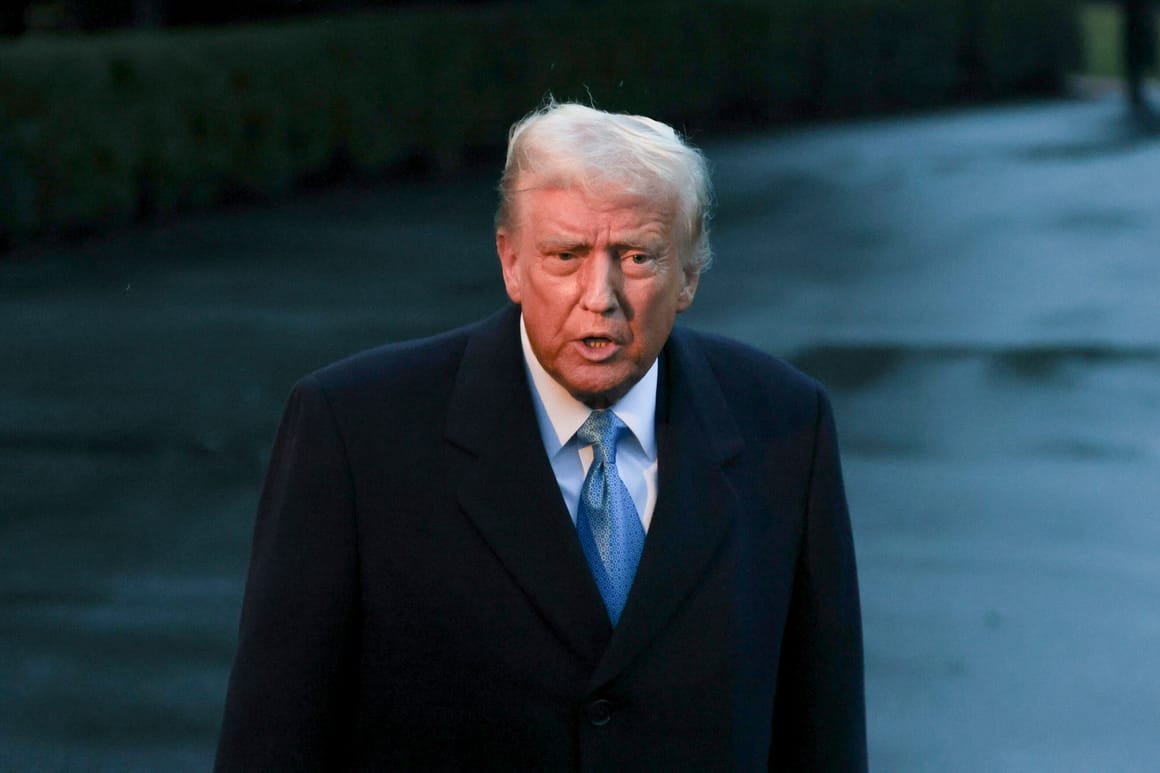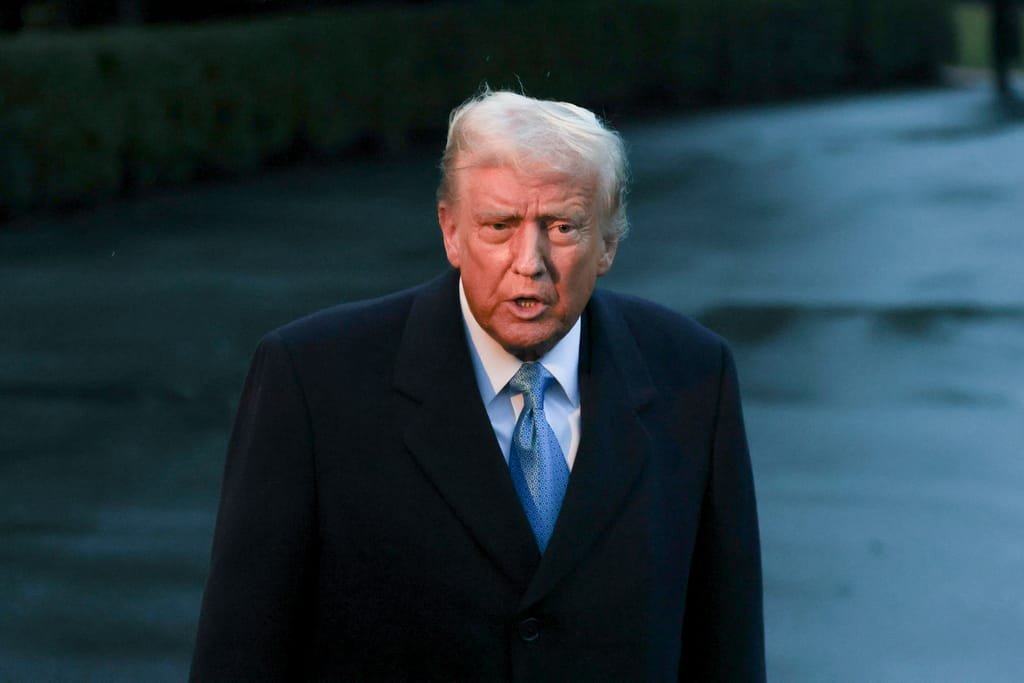With Trump imposing tariffs on Mexico, Canada and China, finding ways to avert a trade war between the U.S. and Europe must be a priority.

Francesco Giavazzi is professor of economics at Bocconi University. Veronica Guerrieri and Guido Lorenzoni are professors of economics at the University of Chicago Booth School of Business.
During the weekend, U.S. President Donald Trump started imposing tariffs on Mexico, Canada and China. So far, Europe has been spared, but the president has announced that the EU is next on the list.
A trade war between Europe and the U.S. thus seems close at hand. Finding ways to avoid it and preserve the world’s trading system should be everyone’s priority.
As it stands, Europe runs a significant trade surplus — both with the U.S. and overall. For example, Germany’ s 2024 trade surplus with the U.S. is expected to exceed $67 billion, the largest since 2017. And Trump often vents his fury at the EU for not buying more American vehicles, military equipment or farm produce. (He’s also rumored to be obsessed with the number of German cars on the streets of Manhattan.)
So, let us take as a given that the Trump administration will want to take steps to reduce this trade imbalance. From Washington’s perspective, the simple solution would be to impose tariffs on EU imports — but it would also be the wrong solution. It would damage U.S. consumers, and it would encourage retaliation.
The first Trump administration imposed nearly $80 billion worth of new taxes on Americans in 2018 and 2019 by levying tariffs on thousands of imports. It amounted to one of the largest tax increases in decades. And by the end of 2018, foreign retaliatory tariffs were costing U.S. exporters approximately $2.4 billion per month in lost exports.

According to economists Mary Amiti, Stephen J. Redding and David E. Weinstein, the welfare cost of the 2018 tariffs alone reduced U.S. real income by $1.4 billion per month. And the Tax Foundation estimates the impact of all tariffs introduced since 2016 reduced long-run U.S. GDP by 0.2 percent, the capital stock by 0.1 percent and employment by 142,000 full-time equivalent jobs.
Clearly, tariffs aren’t a smart way to address the EU’s trade surplus with the U.S.
Moreover, the surplus is mostly the result of weak domestic demand in Europe and exuberant domestic demand in the U.S.
In Europe, private demand is compressed by low wages, and public sector demand is compressed by a set of national and EU-level rules, which constrain government borrowing. If Europe were to ease some of these rules — like Germany’s so-called “debt brake,” for example — European demand would increase, and the trade surplus would automatically shrink.
A transatlantic rebalancing of global demand in this manner would go to the core of the trade imbalance and could help defuse the risk of a trade war.
It would also lead to a weaker dollar.
Trump has repeatedly grumbled about the dollar’s strength, and Treasury Secretary Scott Bessent understands that U.S. tariffs only make the dollar stronger, thus rendering them a largely self-defeating tool for reducing the trade deficit.
By comparison, addressing macroeconomic factors is far more likely to achieve the U.S.’s objectives.
Along these lines, one easy way to increase demand in the EU would be for member countries to meet the 2 percent of GDP target on NATO contributions — a commitment made a decade ago and that few ever met. Of course, since most countries have remained below this threshold for a long time, they could be asked to jump above it for a while, possibly reaching 3 or 3.5 percent. In parallel, higher EU contributions to NATO would allow Washington to cut its own contribution, thus helping to lower the U.S. budget deficit.
However, this might require some rule-breaking by the EU —and Germany’s a good example for understanding why. When Germany finally reached the 2 percent threshold in 2024, it only did so by “cheating.” Berlin shifted some additional borrowing to a public entity that, despite being government-owned, lies outside the federal perimeter. The country’s overall deficit then obviously increased, and the Constitutional Court said this wasn’t to be repeated. This means that drafting a 2025 budget that satisfies the NATO Treaty without further compressing domestic demand will only be possible if Germany’s allowed to exceed its “debt break” and Europe’s budgetary rules.
This would also put Washington in a much stronger negotiating position, as the U.S. could argue it isn’t doing this to punish Europe but to make sure the bloc’s able to defend itself.

While defense spending is a relatively easy area for fiscal cooperation, a more ambitious approach would be to discuss more broadly how fiscal adjustment on both sides of the Atlantic could weaken the dollar and help trade rebalancing.
Policymakers could make these objectives explicit, and some forms of currency intervention could potentially help as well. Bessent himself recently brought up the “Plaza Accord” of 1985, which was centered on weakening the dollar and was pursued to overcome trade tensions.
Working on macroeconomic coordination — starting with an increase in defense spending in the EU and supported by measures to strengthen the euro — is a constructive way to help the U.S. lower its trade deficit. And with the potential to yield benefits for both sides, it’s the exact opposite of a trade war that would simply impoverish all.





